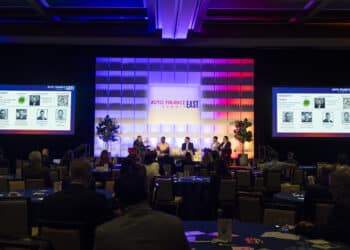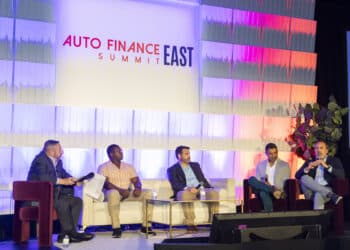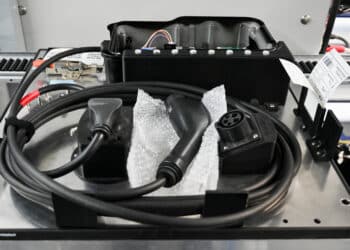Due Diligence Instead of Damage Control: Stopping Auto Lending Fraud Before It Starts

The hard-won lessons of the 2008 financial crisis are more relevant today than ever. While the mortgage industry tightened regulations and lending standards post-crisis, the same cannot be said for the auto lending industry. The volume of auto lending has been steadily growing since 2010, and fraud is unfortunately on the rise, too.
While no lender wants to hear that fraud is a growing threat, the good news is that there are several tools and practices to help combat fraud and shrink the risk in auto lending.
From ‘liar loans’ to synthetic identities
Several factors have made the industry prime for exploitation by fraudsters, but they can be summed up in one word: opportunity.
The exponentially increasing volume of loans, particularly subprime loans, provides more opportunity for fraud. While the whole of the auto lending market is growing, subprime loans are surging. According to Wells Fargo & Co., “In 2009, $2.5 billion of new subprime auto bonds were sold. In 2016, $26 billion were — topping average pre-crisis levels.” Unemployment is low and yet delinquencies are on the rise, suggesting that people are being approved for loans they cannot afford.
“Liar loans” are part of the problem. Liar loans are loans that have been approved without the due diligence of income or employment verification, or they can be loans approved with falsified supporting documents. The end result: a loan is awarded to a borrower who cannot repay it.
The push and pull between security and convenience is another problem. Lenders want to pull in customers, and the online application process is one way they can do it. But with the convenience comes a trade-off in security – for both lenders and borrowers. These types of online-only applications have opened the door to ‘synthetic identities.’
Synthetic identities are a Frankenstein’s monster of sorts. The process involves stealing legitimate personal information, such as a social security number or date of birth, and then using it to build a fraudulent credit history for a person that does not exist. The fraudsters then apply for a loan online. They will make a payment or two, but by the time they default, the car has been sold to another buyer and the “borrowers” are nowhere to be found.
Staying ahead of the curve
The reality is that the way in which many loans are originated is opening the door to more fraudulent activity – and higher risk for servicers. In the case of fraud, the problem might go unnoticed until, after the first or second payments are missed, the financial institution tries to call the borrower and discovers the person doesn’t exist. Or, alternatively, the person at that phone number and with that name is an actual person whose information was stolen to obtain a fraudulent loan.
There are third-party products available to counter the use of synthetic identities throughout the credit decisioning process. They work by monitoring the trending of external along with internal data. For example, if an applicant with the same name, date of birth or social security number is appearing on applications or contracts for auto loans or leases, the lending institution can flag the application to perform additional due diligence.
There are also tools that provide employment and salary verification. These tools can help ward off the use of falsified documentation in loan applications. Third-party scoring tools can discern consumers’ ability/probability to repay a loan. By extension, data mining around the probability of payment or default will determine if a customer will be a good candidate for a loan, protecting both the borrower and the lender.
Predictive modeling organizations are also being brought into the fraud-prevention fold. These types of organizations use data to predict major events in a borrower’s lifetime. They can provide insight into the likelihood a potential customer will miss payments or declare bankruptcy.
From a loan servicing perspective, there are other ways to zero in on fraud, such as performing welcome calls to the newly booked borrowers and lessees on an account. This doesn’t need to be a labor-intensive, costly process. Skillful data mining and the use of scoring tools can help construct meaningful call lists, and business process outsourcing can handle the volume of calls as well as the customer service aspects of the outreach.
In this scenario, once a contract is received and booked, and before the first payment is made, the lender can place a call to the borrower/lessee. The call gives the lender the opportunity to welcome the borrower to the organization and thank him or her for the business. The lender can also use this call to confirm that the application information on file is correct, such as the terms of the loan, the collateral and the borrower’s contact information.
These welcome calls also allow the lender to raise a red flag if the borrower cannot be reached. The lender can then contact the dealer to take swift action to contact the customer and, if necessary, recover the collateral. This chain of communication is important because the hard truth is that the more time has passed, the less likely the lender will be able to collect the collateral.
Given the myriad ways for fraud to seep into your operations, staying ahead of always-evolving technology and trends is essential. Lenders cannot afford to delay in employing every weapon in their growing arsenal to combat fraud. Using the tools and data to make educated lending decisions up front is well worth the price tag, as the costs of cleaning up after a bad lending decision are far greater than that of due diligence.






